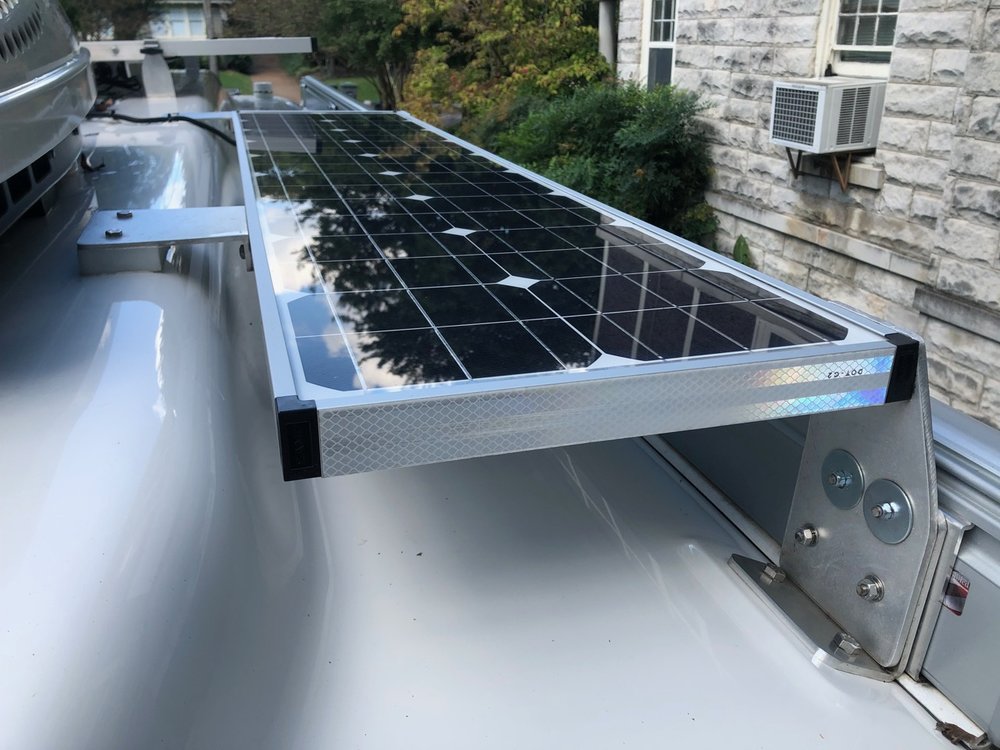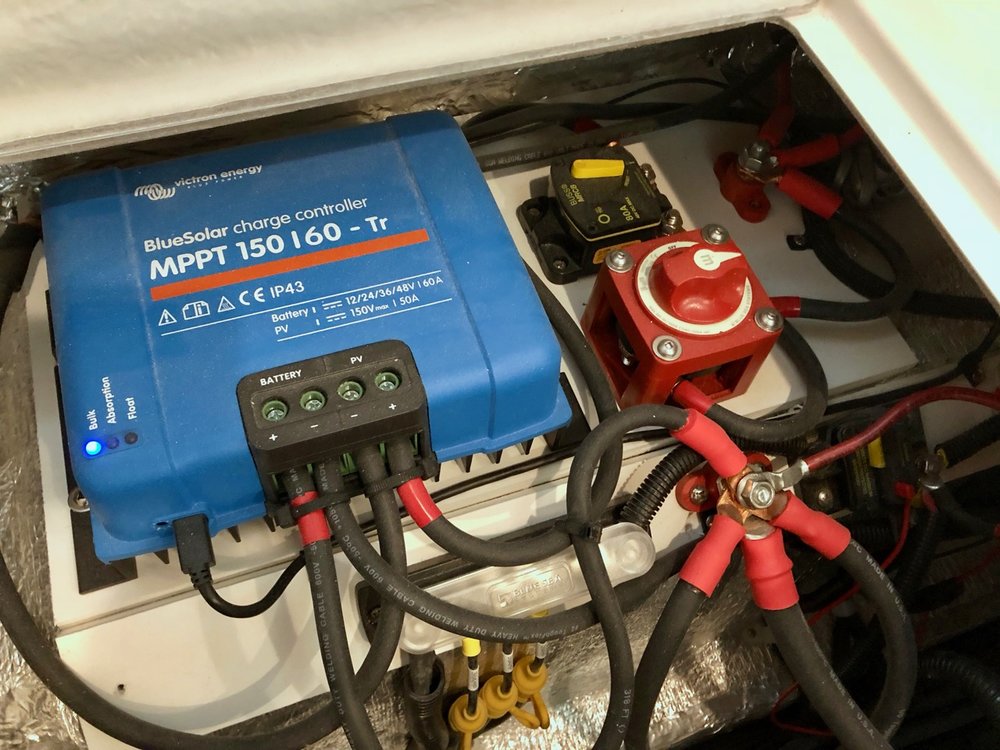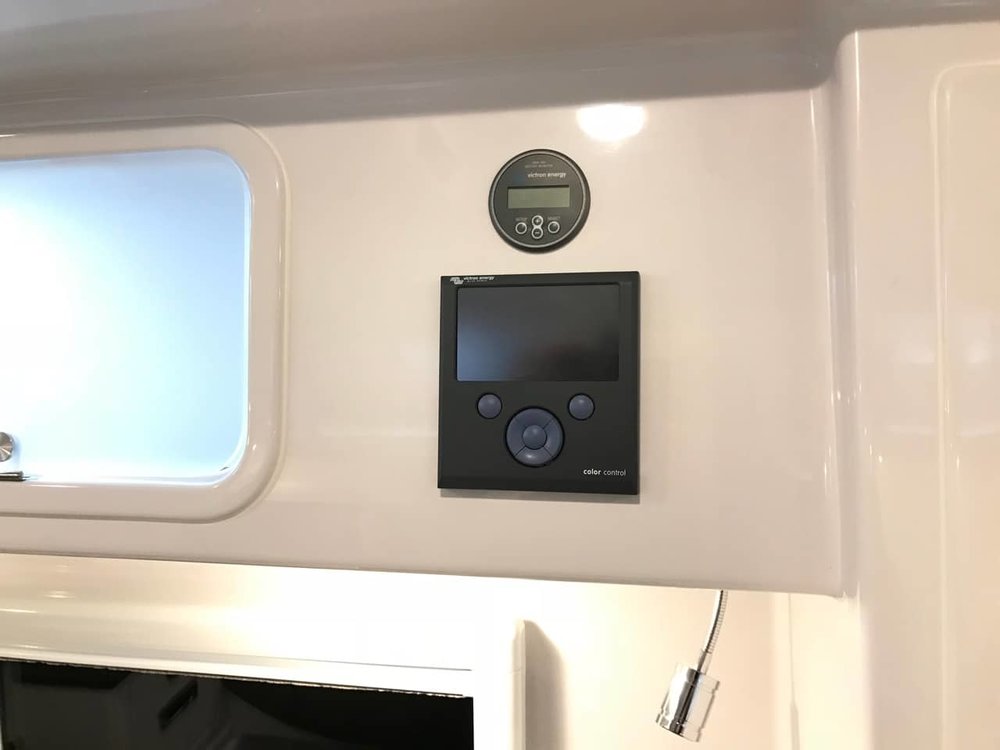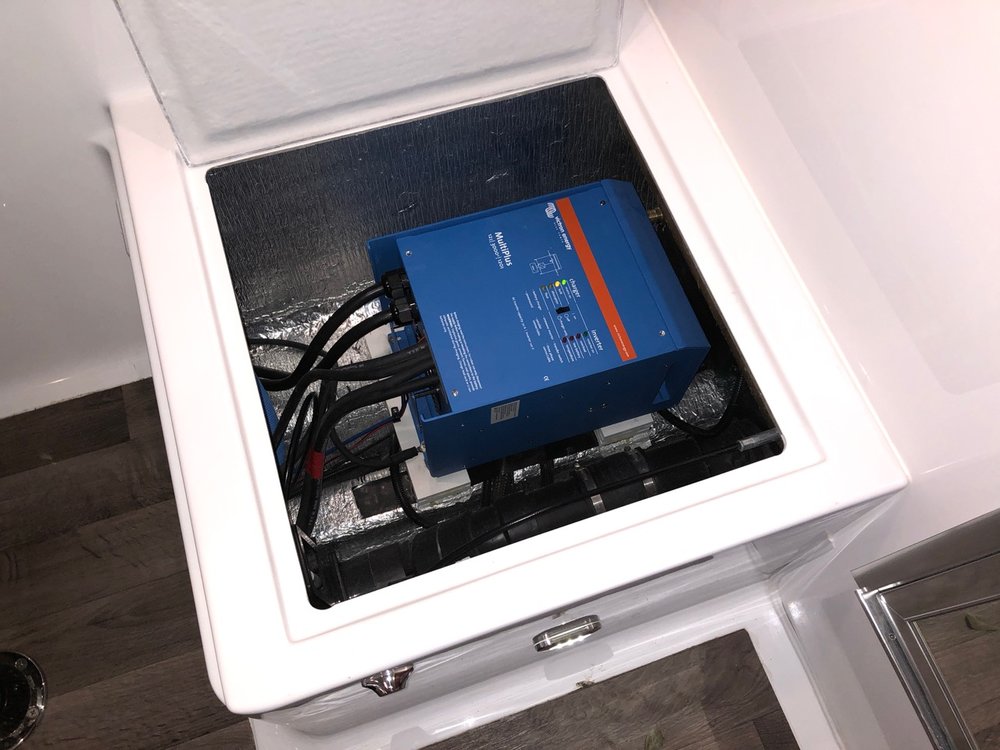-
Posts
3,835 -
Joined
-
Last visited
-
Days Won
212
Everything posted by Overland
-
We use the legos for the stabilizers, but it's a bit silly. They're bulky and heavy and I've never once taken them apart to use like you're supposed to. I'm one of those rebels who uses the jacks like jacks; i.e., like every Ollie owner did prior to two years ago. I really like the Andersen 'buckets', but man, those are some expensive chunks of plastic.
-

2020 Jeep Gladiator 3.0 turbodiesel tow rating
Overland replied to John E Davies's topic in Towing an Oliver
I think it will be fine. I mean, the chassis will be capable of the higher number, even if they lower the rating down to 7,000 due to the engine. And technically, 7,000 is enough, even if it's right on the bubble. Plus it has plenty of torque for the mountains. I never camp in the summer, so personally I'd be fine with it. There will probably be aftermarket grills and whatever to increase the airflow as well. I'm interested in general to see what the aftermarket comes up with for this truck. That's the main thing I don't like about the F150 - you'd think that the best selling vehicle in the world would have a thriving aftermarket, but it's really slim pickings out there. -

MINIMUM safe tongue weight for an Elite 2?
Overland replied to John E Davies's topic in Towing an Oliver
Measure the distance from the centerline of the rack to the centerline of the two axles (D1), then do the same for the hitch (D2). The rest is algebra: rack weight x D1/D2 = reduced tongue weight. To measure the effect of taking the cans off the front, measure that distance to the CL of the axles (D3), divide by D2, and multiply that ratio by the weight of the cans. Add both results together for the total effect of moving the cans and adding the rack. Minimum hitch weight is typically considered 10% of the total. But of course, you're adding considerable yaw inertia by placing a weight on the tail of the trailer. FWIW, I towed with a basket on my bike carrier once this year with a fairly light weight (surely less than 100 lbs including the rack), and if anything felt that it towed a bit better - possibly because I've been towing without a WD hitch. But with such a light weight, I think that was just my imagination looking for something that wasn't there. -
The batteries charge when plugged in, regardless of the amps. The tow vehicle will also charge them, albeit slowly. When plugged in, or on generator, the charge current will outweigh anything being drawn from that current so your batteries are still charging. The charge from solar will vary greatly depending on time of day, year, cloudcover, location, etc., so in poor conditions you can easily use power faster than you can charge from solar. There are a few posts here and there on what you can expect from your solar - I don’t keep track of them though so you’d have to search. Voltage charts vary, but somewhere between 12.1 and 12.5 is generally considered 50% charge. Others here have much more experience with AGMs than me, though, so I’d defer to them.
-

Are 12V batteries hooked up in series or parallel?
Overland replied to Bobfirst's topic in General Discussion
That’s correct, though battery monitors and chargers don’t really care how the batteries are connected. Some are more advanced, but in general they just look at the voltage of the system as a whole to determine the state of charge. -

Are 12V batteries hooked up in series or parallel?
Overland replied to Bobfirst's topic in General Discussion
Parallel for 12 volt. But to make sure that it's confusing, if you get the AGMs, then they're 6-volt and will be paired, two each in series then the two sets are paralleled. There's a diagram in the back of the manual that shows exactly how they should be connected. [attachment file=Screen Shot 2018-11-26 at 6.11.38 PM.png] -
It entirely depends on who you are and what you like to do. The main thing is to be honest with yourself about how you camp or want to camp and then build your trailer to suit. I think you’ll find that Oliver owners are a very eclectic group and what may suit one owner perfectly wouldn’t suit another at all. This forum is great in that there’s so much to learn from those who have different interests and priorities than our own. But trust me, any effort you’ve spent judging those people is effort that you have thoroughly wasted. My wife and I love spending weeks at a time away from campgrounds and love having the amenities out there that solar allows. If you’re happy staying at campgrounds with hookups then there’s not really much point in spending the money on solar and adding complexity to your trailer. You can always add it later if you change your mind.
-
Are you sure it’s latched on both sides?
-
The window is obviously skewed. So I’d think that as long as it hasn’t been damaged from use, it should be replaced by Oliver at the window manufacturer’s expense. I’d ask them to do it for aesthetic or functional reasons, regardless of the leak, though you’re probably correct about that being the cause. Like Bill suggested, I’d send an email to Scott with that photo and an explanation of your problems having to go back multiple times to get things fixed I’m certain that they’ll take care of it.
-
So long as you have a pressure regulator on your air tank/compressor, it should be fine. Just set it to 60psi. There’s a tremendous fudge factor there even if you went a bit higher since air is compressible, and wont hammer the lines like water. Plus you’ll have a faucet open when you blow the line so not much pressure will build anyway.
-
Lol, we just had a whole conversation about diy solar on another thread because I posted in the wrong thread apparently. Turns out it’s not relevant anyway since you’re just talking about portable. The thread CedarForks linked too is more relevant. Oh well, here’s the link to our discussion anyway: http://olivertraveltrailers.com/topic/steve-and-kelly-from-mo/#post-153931
-
Interesting. I had them put an outlet in the basement for the same reason and have that xtreme heater on my amazon list but haven’t bought it yet. I started debating just adding a vent and small fan between the basement and main cabin. Still haven’t decided which way to go.
-
The furnace and ducts are uninsulated, so it will keep the pump and water lines in that area pretty toasty. It’s the lines in the rear street side that are the ones to worry about. If you think you’ll need to winterize often, then I’d invest in a small compressor or air tank to blow the lines out after you refill the tank. It’s an easier way to winterize anyway.
-
I think Mountainborn has towed his Ollie all over the place with a very heavily loaded JKU. Not sure I would recommend it, but it's definitely been done. I don't see any reason why the new Jeep truck couldn't tow either Ollie. You'd probably want to install air bags to handle the tongue weight, but that's no big deal.
-
I had a leak at delivery from the curb side exterior light over the window. Oliver said they forgot to seal it. It was fixed at delivery and hasn't been a problem since. Hull #256. The drip guards that people have put over the windows on some of the older trailers is to allow them to be open in the rain. Oliver used to use a different seal between the awning and shell that would allow water to come down the side of the trailer and sometimes into the window if it was open. That's been changed for some time. I don't think that the guards would do much anything on a newer trailer. We get one small drip down the outside from our awning where the seal doesn't quite sit right as it goes around the center awning mount. Because of the location, it's a purely cosmetic issue for me and not worth bothering trying to reseat the seal. We leave our windows open regularly in the rain, with the awnings rolled out about 18", and have never had a problem. The mattress pads are more for condensation than leaks. And I think that's primarily if not entirely an issue with the latex mattress option, the design of which traps body moisture underneath. The windows can leak if the drains aren't maintained. Arguably that's a design flaw since on the Ollie the windows tilt in slightly, which means an overflow goes to the inside rather than out. But if you keep the drains clear, it's never a problem. I haven't had an issue with mine. There's nothing wrong with either sealant Oliver has used. The discussion stems from the fact that Oliver apparently switched sealants this year and so it's confused people when they've asked which one to buy, which has led to discussion here. I couldn't tell you the relative merits of either, only that they used the 3M on mine and it seems to be holding up fine.
-

"To Equalize or Not to Equalize: That is the Question
Overland replied to hobo's topic in Towing an Oliver
I think Randy’s point is that if the rack sits higher than the propane housing, then a standard hitch setup should work fine. No need for an extension. Looking at the photo, I’d agree and in fact even wonder if you need an extension regardless. As for a WD hitch, if you’ve got airbags, it wouldn’t be needed. -
I thought that someone on the forum towed with the 2.7. It would be good to hear from them. Personally, I think it would be fine, especially since the 10-speed transmission seems to do a really good job of keeping the engine in its power band. And the numbers don’t lie - it’s a strong little engine. Having said that, you’ll always find situations where you want more power, regardless how much you have on tap. Even with the raptor engine, there have been times when I’ve wanted more and I’m sure the diesel 250 owners here will say the same. But of course every time I stop for gas, I wish I had the 2.7, lol. Actually, I’m interested to know how their new small diesel tows in a 150.
-
I don’t want to dismiss anyone’s current issues, and I think it’s inevitable that there will always be trailers coming off the line with problems; but judging from posts here, the number of problems don’t seem anywhere near what it was like with units in the 200’s. And prospective owners should know that my trailer in particular was subject to production pressures that don’t apply to current buyers. In regards to my original post, all those problems were corrected and today my wife and I couldn’t be happier nor more willing to recommend Olivers to others.
-
I’ve had mine stick on red after swapping tanks. Turning the valve off and on again has always reset it. Having a backup regulator and set of pigtails is a good idea, and if you carry a set of pigtails then I think inspecting them for cracks and leaks is probably sufficient, rather than replacing them every year. I’ve seen solid copper pigtails for sale.
-
It isn't an issue with just the one panel each side, since I can easily reach from either end to clean. But yes, if you ran three end to end down the full length of the awning then I think you'd want to incorporate some sort of hinge and latch so that you could lift them up to clean. The big panels in front are a bigger pain than the rear. I worried about roof access, but I had to install the soft start on my AC since Oliver forgot it, and it wasn't a problem. The awning seal does collect junk, but that's a side affect I can live with. Being able to leave the windows open in the pouring rain and not having to worry about gunk in the window tracks makes it worth the trouble. When we camp, I roll out the awnings on both sides about 18", which is enough to attach the poles to the trailer without them hitting the belly band. They can withstand most any wind in that position and allows us to leave the windows cracked when we leave without worrying about rain. Plus I think it keeps the trailer a bit cooler inside. A side benefit of those panels was that they gave me a nice spot for some reflective tape. I realized during our first trip that I had driven one night after going over a muddy gravel road with pretty much no lights on the rear of the trailer, since they had gotten covered in dirt from the back spray. The end of the panels were about the only place that stayed clean.
-
We'll use anything from 80 to 120 Ah, depending on if we use the toaster oven for dinner. That includes hair dryer for my wife, two or three cups from the Nespresso, and maybe playing the HomePod for a few hours, which I've taken with us for the last few trips - sounds great in the trailer. And our 12v fridge, which may draw ~30Ah/day, give or take. So, after a heavy use night and morning, the batteries will be at ~70%, sometimes 65%. On a light night, it might be at 90% when we leave in the am. We can go on ultra savings mode and only lose ~5% of our battery life overnight - inverter off, no more than 2 lights on in the trailer and none outside, meaning the fridge is the biggest draw. Recharge depends on the conditions. If we're in deep shade like we were last week in the smokies, the solar will basically keep up with the fridge and parasitic draws during the day and so each night will progressively drain the batteries. On a really sunny day, no trees, it might recharge before noon, even from 70%. The lowest we've had it when camping is 40%, I think. We can go to down to ~10% before things start to fail. We made the mistake last week of doing two heavy use nights in a row while in a shady spot, assuming that when we moved to another campground that we'd have sun. The next campsite was even shadier, so we managed to keep the loss at a minimum for a few nights before deciding to go to a nearby KOA for a night to recharge. That's the first time in 15,000 miles that we had to do that, and had we not gotten complacent about the batteries, probably could have avoided it. And arguably we could have toughed it out without the inverter, but I wanted my coffee and had no backup for the Nespresso. Poor disaster planning on my part. I'm sure that the smaller panels get shaded by the AC in low sun, but they're connected in parallel so one panel going out doesn't affect the others. Obviously I like Victron equipment as a combined system; but if even you get a stand alone battery monitor, I think it's hard to beat the Victron BMV battery monitor with bluetooth. It's an easy add-on to the stock Oliver system and gives what seems to be a very accurate reading of the battery state.
-
Short answer is no, but it hasn’t been an issue for us so far. The protection circuits in the battleborns cut charging at 25°, which is low enough that we haven’t experienced any issues. We’ve had a few nights where the temp hovered around that but I doubt it got that cold inside the battery box. The high end cutout is 135° and they say that there’s no long term issue using the batteries in 90°+ weather, which I know the technomadia guys had a problem with. But I don’t think their home built system used a BMS to care for their batteries so that may be the issue there. I’ve put some thought into moving them inside, for that reason plus the idea that I might be able to add more someday. I think it’s possible to build a platform that runs between the dinette and bed on the street side that would hold 6 batteries, but I haven’t taken exact measurements nor put any thought into how it would connect to the hull. Nor how you’d make the connections in there since it’s a long reach from either side. I think you’d have to add an access hatch in the base of the pantry probably. Just spitballing - no idea if it’s feasible or worth the trouble.
-
When you say solar, do you mean just the panels, panels and charge controller, or more? I did "more", which included doing my own charger, batteries, inverter, monitor, controller, etc. I can say that getting the equipment into the Oliver is easy with a little planning, but of course the more complex of a system you design, then the more cables, connections, etc. and more chance of screwing it up. But if you're comfortable with 12 volt circuits and either have or invest in a few specialty tools, then it's definitely doable, as proven by a novice like myself. If you're just doing the solar, then the only things you'll need to coordinate with Oliver are your planned mounting locations and the number and size of cables that you want run from the roof. It might be easier if you have them go ahead and install the combiner boxes on the roof so all you have to do is plug your panels in. As for panels and mounting, I recommend doing what Oliver devised for the narrow Zamp panels on my trailer - It's a really tidy install, and you should be able to fit up to three each side, which would give you a max of 540 watts (90 each). Then if you wanted, you could even add a larger 170 watt panel mounted flush to the roof. It would be a pretty slick install and in hindsight is what I wish they'd done on mine. Actually, it's what I wish they'd do standard, but of course it requires dual awnings. Which everyone should have anyway, as they're awesome. I'd try to find another supplier other than Zamp for narrow panels like that, since Zamp is overpriced; but I think they're the only ones who make them. Charge controller, etc. is easily tucked under the street side bed: I put my battery monitor and system controller where the stereo would have gone: And if you get fancy with charger and inverter, then you can get a pretty big unit under the front dinette seat by the bath: And batteries go in the battery box, of course. If you're going lithium, you can fit up to six regular 100Ah lithiums in the tray, or if you don't want to bother with a separate BMS, then you can fit four 100Ah Battleborns in there, if you stand them on end - it's a tight fit, but it works. Happy to help with any of the specifics. Don't forget to factor in the solar tax credit for whatever you spend.
-
Expo was a mud pit, as usual. I don't see how the sponsors put up with it. A few interesting things here and there but not much new. We got a Friday day pass and the only reason we went is because we had planned a week in the Smokies and it was right nearby. I doubt we'll go again, at least not for some time. I really wanted to spend some time looking at the Earth Cruisers, Earth Roamers, etc. in detail to see how they did things - ideas for future mods and upgrades - but tbh there wasn't anything obvious that would be practical to copy. The Black Series seem well built enough. It's hard with that sort of construction, both in and out, to tell how well it's put together without really spending some time. But everything felt solid. They told me that they just finished their US production line so they'll all be made here. The story I was told was that a Chinese investor bought the rights to produce and sell them in the US. They're selling direct right now, but I have no idea what their plans are. The factory is in California - the rep told me that they wanted to keep clear of Elkhart, which is a good sign. All the units they had at the Expo had the heavy duty XO jacks.
-
I got to tour two Earthcruisers in person last week at Overland Expo East, and spoke to some owners for at least an hour. The product, and the customers they attract, are indeed much like here. It was interesting to have very similar conversations with them about quality that we have here; i.e., unanimously thrilled with the quality and service, yet still dealing with 'minor' problems like leaks, production delays, etc. They have a new box designed to fit ¾ ton pickups which is pretty nice. It's very similar to their Fuso boxes but shorter. Still a very livable space. And still out of my price range at $100k+, not including the truck. John, I also toured the Black Series trailers while I was there. They're definitely what I was looking for before going with an Ollie. I'm not sure what I'd have done had the option existed when I bought. You should check them out if you haven't already.







